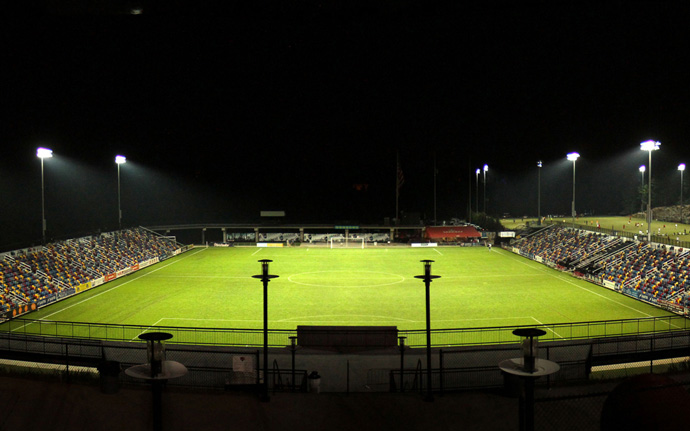Floodlighting stadiums for the world of televised sports may be glamorous but not many of us are lucky enough to have the opportunity.
 It is important to realise that although sports floodlights can also be used for general area lighting such as car parks, an off-the-shelf, general purpose floodlight is almost certainly not suitable for sports lighting.
It is important to realise that although sports floodlights can also be used for general area lighting such as car parks, an off-the-shelf, general purpose floodlight is almost certainly not suitable for sports lighting.
The big difference is that sports floodlights need to have better optical control. The uniformity of illumination required on a sports pitch is often 60 to 70 per cent whereas car parks and other open areas may only require 25 per cent. Also, the optical system on a sports floodlight mustn’t produce any hot spots or bands of light.
Similarly, sports pitches usually have much higher levels of illumination. It’s not uncommon for a sports pitch to have 10 times the illumination of a nearby car park. Any rear or upward spill light from the floodlight must therefore be severely restricted because there is so much more light output. This can be done by having a tightly controlled optical system or using visors, baffles, beam-shaping lenses, louvres etc. These options may not be available on ordinary floodlights. The sports floodlights may also be required to minimise glare or intensity towards residential housing.
Another consideration is the mounting height of the floodlights. Obviously, the higher the floodlight, the more it can be tilted downwards and this achieves greater horizontal illumination. This produces less glare and less upward light. However, tall columns may not be visually acceptable especially because of their daytime appearance. Lower mounting heights are often more acceptable visually but often lead to more glare and upward light spill (because of the higher upward tilt). Low mounting heights also often produce more forward spill light and often the light spreads beyond the other side of the pitch. This is more common than you might think.
Guidance on what illumination and uniformity is required can be found from national professional lighting bodies such as the IESNA, the Society of Light and Lighting and the Institution of Lighting Professionals. Often, the particular sport’s association will give recommendations on lighting.
One aspect that is becoming more important is the colour temperature of the light source. A lot of sports lighting companies supply floodlights which have a colour temperature of around 5700K or even higher. However, many outdoor lighting experts recommend much warmer colour temperatures of less than 4000K and some even recommend < 3000K.
One reason that cool light sources were recommended was that they used to product a lot more light output (lumens) per Watt than warm sources. However, there is little difference nowadays and so that justification is no longer valid. You may decide that environmental or ecological considerations should take preference over the achieving the absolutely lowest energy consumption.
News Source: http://luxreview.com/article/2017/09/lux-recommends-sports-lighting
